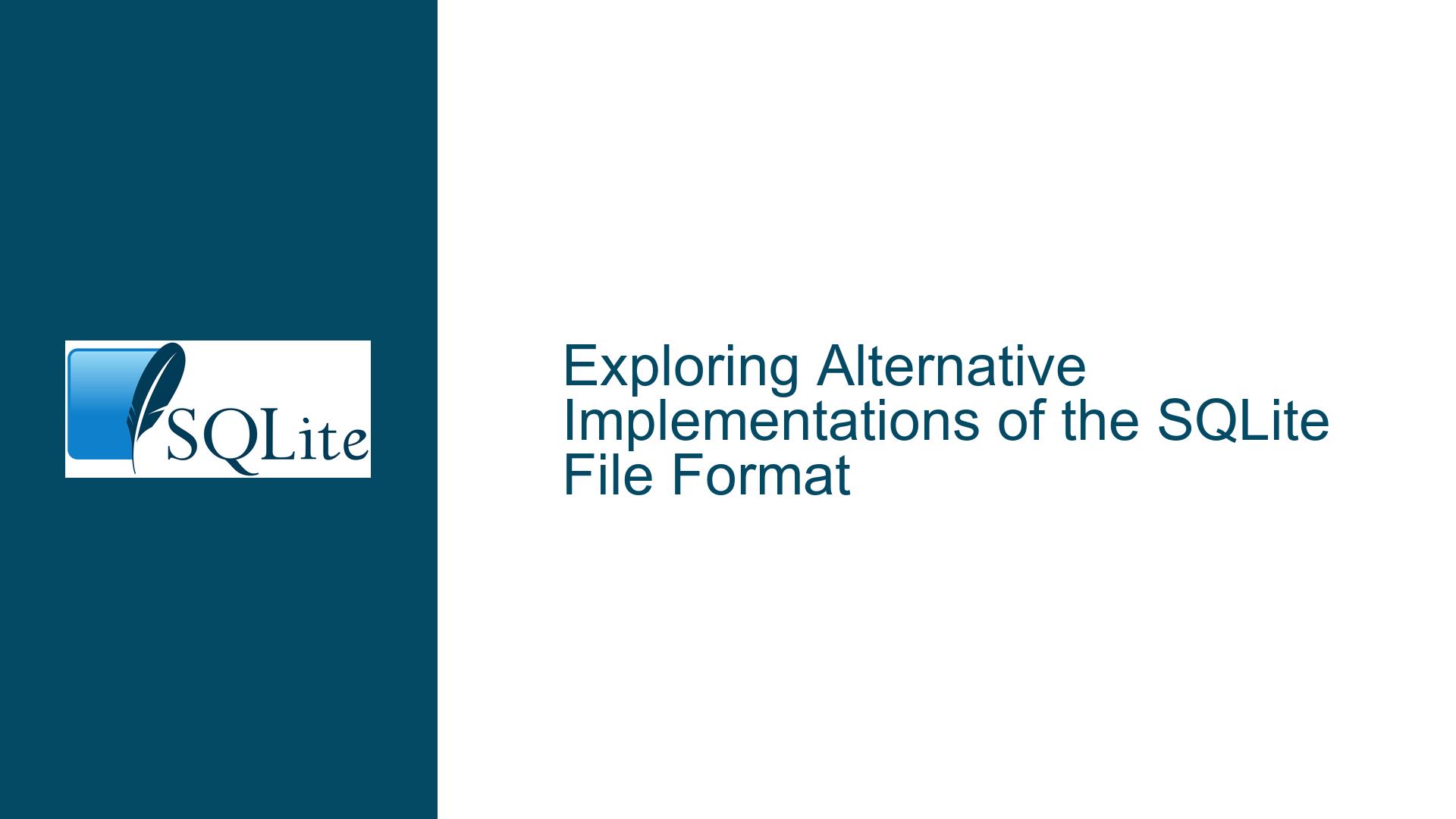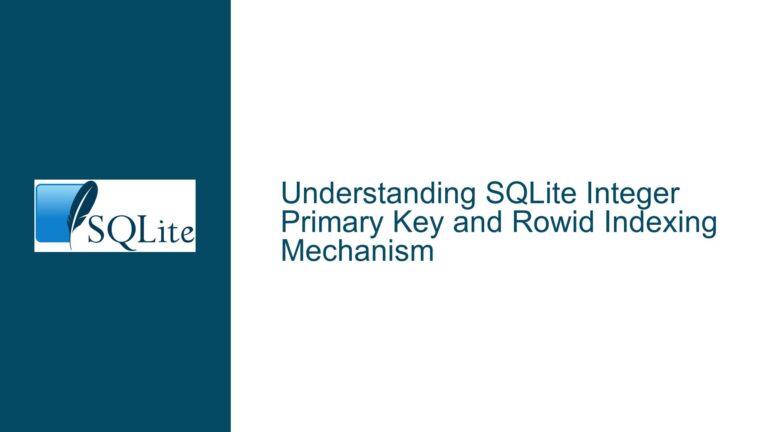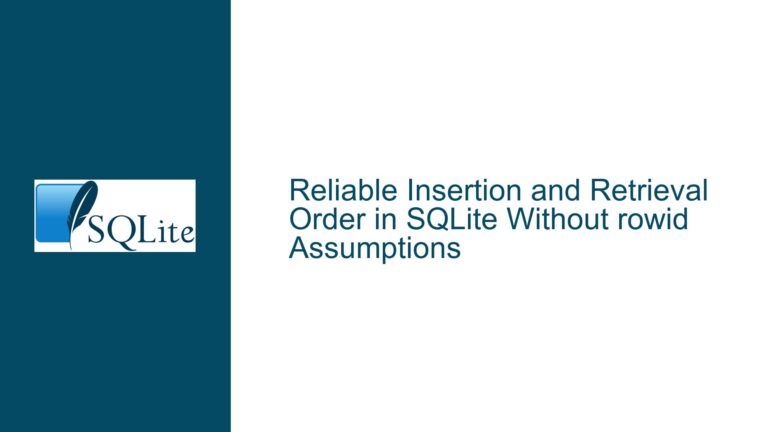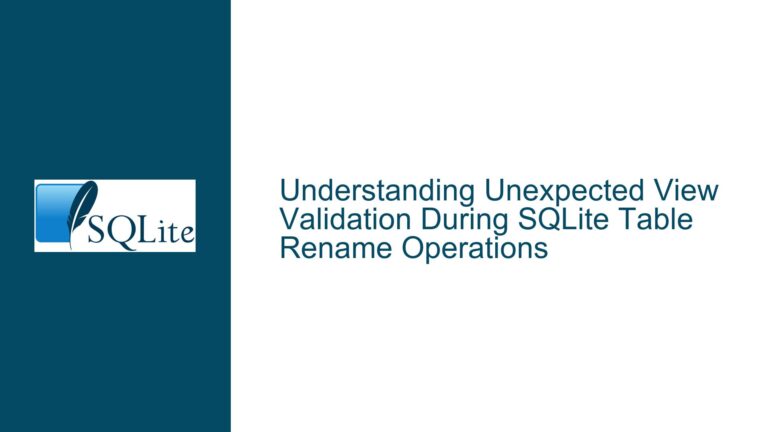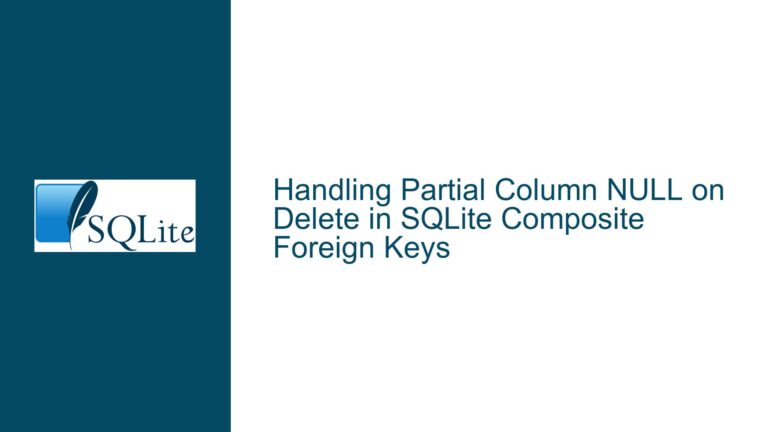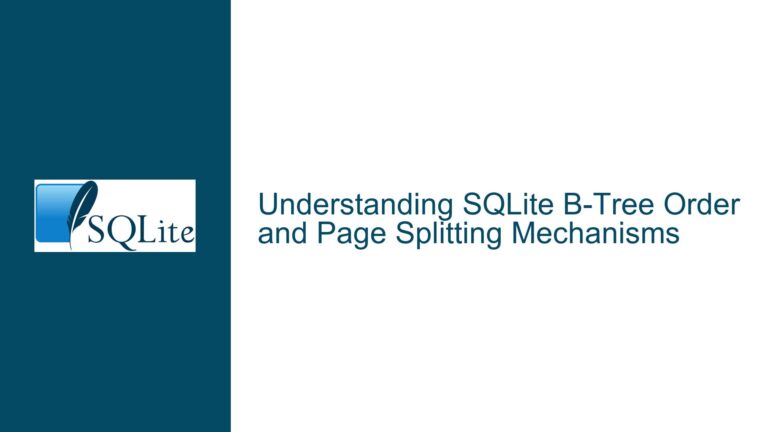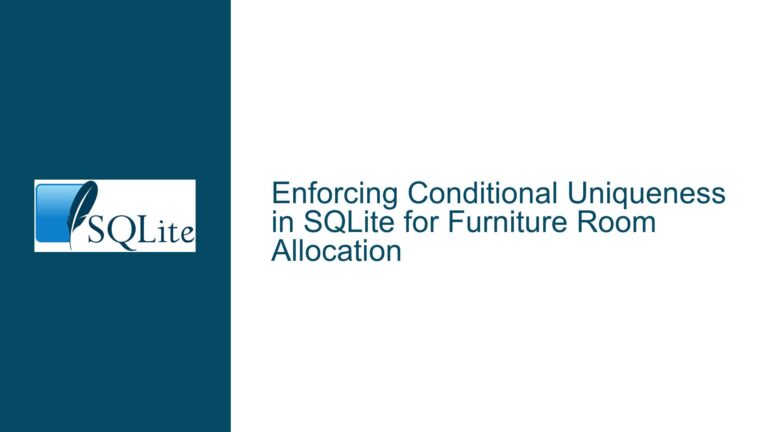Exploring Alternative Implementations of the SQLite File Format
SQLite as a File Format: Understanding Its Unique Position
SQLite, often recognized as a lightweight, serverless, and self-contained SQL database engine, has evolved into something more than just a database implementation. Over the years, it has become a de facto file format for structured data storage and transfer. This transformation is not accidental but rather a result of its design principles, which emphasize simplicity, cross-platform compatibility, and long-term stability. The SQLite file format is meticulously documented, making it accessible for developers to understand and implement. However, despite its widespread adoption and the availability of its specification, there are very few alternative implementations of the SQLite file format. This raises questions about the challenges and motivations behind creating such implementations, as well as the unique characteristics of SQLite that make it both a database engine and a file format.
The discussion around alternative implementations of the SQLite file format reveals several key insights. First, the SQLite file format is not just a byproduct of the database engine but a deliberate design choice that prioritizes simplicity and compatibility. Second, the lack of alternative implementations can be attributed to the high quality and public domain nature of the official SQLite implementation, which reduces the incentive for others to invest in creating competing versions. Third, while there are partial implementations and readers of the SQLite file format, particularly for forensic analysis, there is a notable absence of alternative writers. This post will delve into these aspects, providing a comprehensive analysis of the SQLite file format, the reasons behind the scarcity of alternative implementations, and the technical considerations involved in creating such implementations.
Why Are There Few Alternative Implementations of the SQLite File Format?
The scarcity of alternative implementations of the SQLite file format can be attributed to several factors. First and foremost, the official SQLite implementation is of exceptionally high quality. It is robust, well-tested, and continuously maintained by a dedicated team of developers. The source code is in the public domain, meaning anyone can use, modify, and distribute it without restrictions. This level of accessibility and reliability reduces the need for alternative implementations, as most developers can rely on the official version without encountering significant issues.
Another factor is the complexity of the SQLite file format. While the format is well-documented and relatively simple compared to other database file formats, it is still a non-trivial task to implement a fully compatible reader or writer. The format includes various components, such as the database header, B-trees, pages, and journaling mechanisms, each of which must be meticulously handled to ensure compatibility. Additionally, the format has evolved over time, with new features being added while maintaining backward compatibility. This means that any alternative implementation must not only adhere to the current specification but also account for potential future changes.
The use of SQLite as a file format for data transfer further complicates the matter. Many applications use SQLite databases as a container format to store and transfer structured data, particularly in mobile and embedded systems. In these scenarios, the database is often read-only, meaning that the primary requirement is a reliable reader rather than a writer. This has led to the development of various forensic tools that can read SQLite files, but these tools are typically specialized and do not aim to provide a full-fledged alternative implementation.
Finally, the lack of alternative implementations can also be seen as a testament to the success of SQLite. Its widespread adoption and integration into countless applications and systems have made it a standard for structured data storage. This ubiquity means that developers are more likely to use the official implementation rather than invest time and resources into creating an alternative. Moreover, the SQLite development team has made a commitment to maintaining backward compatibility until at least 2050, further reducing the need for alternative implementations.
Challenges and Considerations in Creating an Alternative SQLite Implementation
Creating an alternative implementation of the SQLite file format is a challenging endeavor that requires a deep understanding of the format’s intricacies and a commitment to maintaining compatibility with the official implementation. One of the primary challenges is ensuring that the alternative implementation adheres to the SQLite file format specification. This involves correctly handling the database header, which contains critical information such as the page size, encoding, and version numbers. It also requires implementing the B-tree structure used for indexing and storing data, as well as managing the various types of pages, including leaf pages, interior pages, and overflow pages.
Another significant challenge is handling the journaling and write-ahead logging (WAL) mechanisms used by SQLite to ensure data integrity and support concurrent access. These mechanisms are essential for maintaining the consistency of the database in the event of crashes or power failures, and any alternative implementation must replicate their behavior accurately. This includes managing the rollback journal or WAL file, which are transient files used during transactions, and ensuring that they are correctly synchronized with the main database file.
Compatibility with the SQLite C API and SQL language implementation is another consideration. While the file format is the foundation of SQLite, the database engine also includes a rich set of APIs and SQL features that applications rely on. An alternative implementation would need to provide a compatible API and support the same SQL syntax and semantics as the official implementation. This includes handling edge cases, such as ambiguous SQL statements, time-dependent queries, and undocumented features, which can be difficult to replicate accurately.
Performance is also a critical factor. SQLite is known for its efficiency and low overhead, making it suitable for use in resource-constrained environments. An alternative implementation would need to match or exceed the performance of the official version, which requires careful optimization and tuning. This is particularly challenging given the complexity of the SQLite codebase and the numerous optimizations that have been implemented over the years.
Finally, creating an alternative implementation requires a long-term commitment to maintenance and support. The SQLite file format is not static; it evolves over time as new features are added and improvements are made. An alternative implementation would need to keep pace with these changes to remain compatible. This requires a dedicated team of developers and a robust testing infrastructure to ensure that the implementation remains reliable and up-to-date.
Potential Solutions and Future Directions for Alternative Implementations
Despite the challenges, there are several potential avenues for creating alternative implementations of the SQLite file format. One approach is to focus on specific use cases where the official implementation may not be suitable. For example, an alternative implementation could be optimized for embedded systems with limited resources, providing a lightweight version of SQLite that sacrifices some features for reduced memory and storage requirements. This could involve simplifying the B-tree structure, reducing the size of the database header, or omitting certain journaling mechanisms.
Another approach is to create a specialized implementation for forensic analysis. As mentioned earlier, there are already tools that can read SQLite files for forensic purposes, but these tools are typically limited in scope. A more comprehensive implementation could provide advanced features for recovering deleted data, analyzing free pages, and extracting information from corrupted databases. This would require a deep understanding of the SQLite file format and the ability to handle edge cases and inconsistencies.
A third approach is to develop an alternative implementation in a different programming language. While the official SQLite implementation is written in C, there is potential for creating implementations in languages such as Rust, Go, or Swift. These languages offer modern features and safety guarantees that could make the implementation more robust and easier to maintain. For example, a Rust implementation could leverage the language’s memory safety features to prevent common errors such as buffer overflows and null pointer dereferences. Similarly, a Swift implementation could take advantage of the language’s concurrency model to provide better protection against race conditions.
In addition to these technical approaches, there is also potential for standardizing the SQLite file format through organizations such as the IETF. This would involve creating a formal specification and submitting it as an RFC, which could lead to broader adoption and the development of independent implementations. However, this process would require careful consideration of the existing specification and potential modifications to ensure compatibility with the official implementation.
Ultimately, the development of alternative implementations of the SQLite file format is a complex and challenging task that requires a deep understanding of the format’s intricacies and a commitment to maintaining compatibility. While there are few alternative implementations currently available, the potential for innovation and specialization in this area is significant. By focusing on specific use cases, leveraging modern programming languages, and exploring standardization efforts, developers can create alternative implementations that complement the official SQLite version and expand its capabilities.
